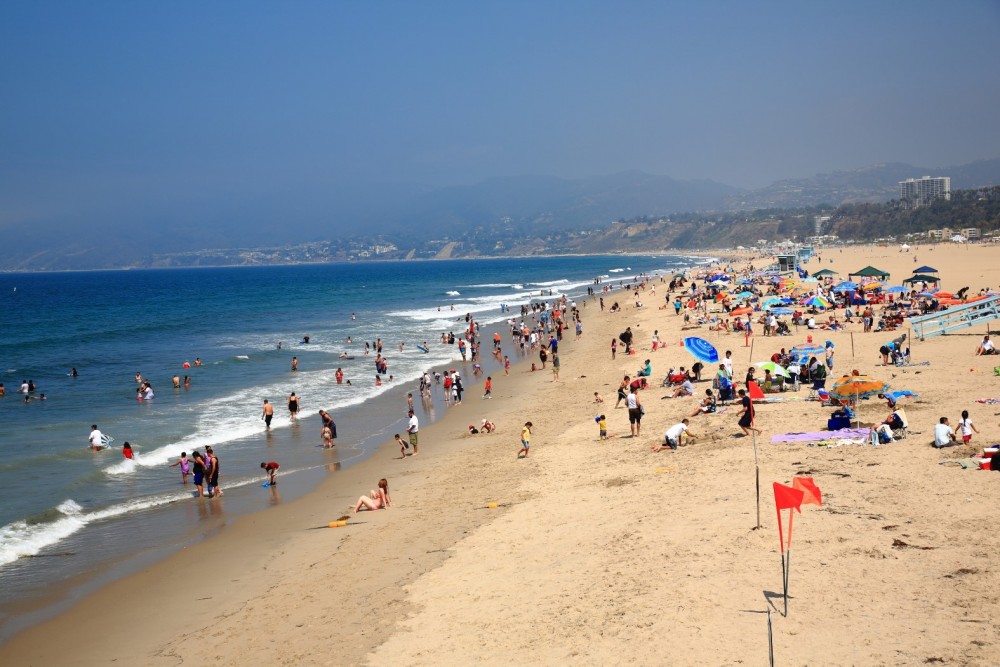
On January, 29, 1985, 32-year-old Fumiko Kimura waded out into the cold waves off Santa Monica Beach on a deadly mission.
About fifteen minutes earlier she had been walking along the mostly empty beach with her children, six-month-old Yuki, a girl, and four-year-old Kazutaka, a boy. They passed a hot dog stand and a shooting gallery along the world-famous stretch of sand. It was around noon and the pleasant California sun beat down, though the temperature of the Pacific Ocean was a frigid 57 degrees Fahrenheit. It is doubtful anyone was in the ocean that day, but that is just where Kimura was headed. Her goal was to kill herself, and her two children.
In one arm she took the infant Yuki. In the other arm she clutched the child Kazutaka. Then, like Edna Pontellier in Kate Chopin’s famous 1899 novel, The Awakening, Fumiko Kimura walked into the waves. Of course, Kimura’s act was vastly different than that of the literary drowning death of Edna. And it was quite different from the real life drowning of literary icon Virginia Woolf, who filled the pockets of her overcoat with stones and stepped into the River Ouse. This case was different because Kimura had her children at her side. And moments later a group of joggers helped to recover the bodies of this young family.
Eighteen-year-old Nancy Pontius, a UCLA freshman, was part of the group that helped pull the bodies out of the water. At first Pontius and her friends thought what they saw in the water was a mass of floating seaweed. “Then they realized it was a woman,” journalist Leslie Pound, described in a lengthy June 1985 newspaper article about the event. “The little boy surfaced next, and as they pulled him out of the water, they saw Yuki.” Pontius was devastated. “I felt at that moment like that baby was my baby,” she said. “I was holding their hands. We screamed at them.”
The four-year-old Kazutaka died later that day. The six-month-old Yuki was on life-support systems for a week before she died. Kimura survived and was charged with first-degree murder, and at least initially, faced life imprisonment, possibly even the death penalty. But outrage in California’s Japanese American community was swift. Supporters formed a group called the Fumiko Kimura Fair Trial Committee, and asked that the American legal system take Kimura’s cultural heritage into consideration. As awful as it sounds, the drowning of one’s children, they argued, had a precedent in Japan. It was a phenomenon called Oyako-shinju.
“Oyako-shinju occurs in Japan because people feel that they are in a situation of losing face or that they are a burden to society,” Leslie Pound reported. She quoted someone from the San Fernando Valley Japanese-American Community Center, who explained that “in such a case, suicide is acceptable.”
The Fumiko Kimura Fair Trial Committee gathered more than 1,000 signatures. Their petition asked the district attorney to charge Kimura with involuntary manslaughter instead of first-degree murder. Another 500 people filed signatures from Japan. But Louise Comar, the assistant district attorney assigned to the case for Los Angeles County had a different view of justice. “People feel badly for Mrs. Kimura,” said Comar, “but she had absolutely, positively no right to kill the children. I’m an individual and have normal sympathies to her, but I’m also horrified that a woman would walk into the water and kill her children…It doesn`t matter if you kill out of love or kill out of hate, we’re talking about taking the life of another person. We have the right to demand that people who live in our society abide by our own rules.”
“Nobody seems to remember that two children died,” added Ray Cooper, the Santa Monica homicide detective who was called to the beach when the Kimuras were found. “All they remember is the mother and how distressed she was. But how terrible it must have been to be drowned, forcibly drowned. Those children had bruises on them. Somebody just doesn’t submit to the pain of drowning.”
Fumiko Kimura was indeed in distress. She had lived in the United States for more than a dozen years—a fact highlighted by some people who argued against a cultural explanation for the suicide—but did not have many friends. There may have been smaller incidents that led to her unhappiness, but the crowning icicle of her sadness appears to have involved the infidelities of her husband, Itsuroko Kimura, an artist and restaurateur. The affair had been going on for three years. Weeks before Mrs. Kimura walked into the waves, the relationship had apparently been called off. And just two days before, the woman with whom her husband had been having an affair sent Mrs. Kimura a letter, explaining her feelings.
In those last few weeks before the suicide attempt, Mrs. Kimura told her brother that she couldn’t sleep. She had lost ten pounds. The affair had devastated her. Still, she seemed to have remained a dutiful mother to her children. “She was a loving, caring mother and a warm, gentle woman,” recalled the property supervisor at the apartment complex where she lived.
In the end, Mrs. Kimura did receive leniency from the state. In October 1985, she was charged with voluntary manslaughter and sentenced to one year in prison, with credit for the months she spent in custody during her trial. Recommendations for clemency brought her an early release, and for several years she remained on probation and was ordered to undergo psychiatric treatment. While the determination of the court seemed to have fallen into line with what the Fumiko Kimura Fair Trial Committee wanted, at least some people have looked back upon the case in a different light.
“This need to impute an anthropological exoticism to murder-suicide in Japan, but not to identical acts in Western countries,” wrote mental health journalist William Wetherall, in a 1986 journal article, “stems from an unpreparedness to recognize that Japanese murder-suicide is really human behavior costumed in national-character myths that began centuries ago with caricatures of Japan as a land of people who value death more than life.”
Still, Wetherall does not believe that Mrs. Kimura got off lightly.
“Society,” he added, “has entrusted Kimura to the open prison of her own conscience.”










Clayton Wheatley
Wow. I remember this case as a kid. I remember being struck by the fact that the journalists refused to publish the other woman’s name.